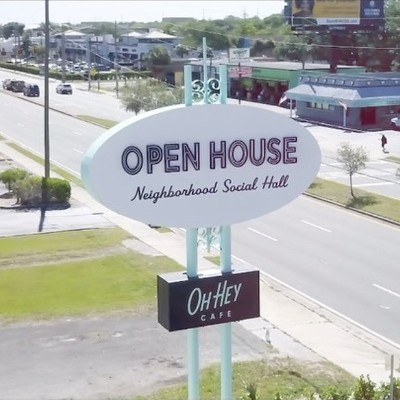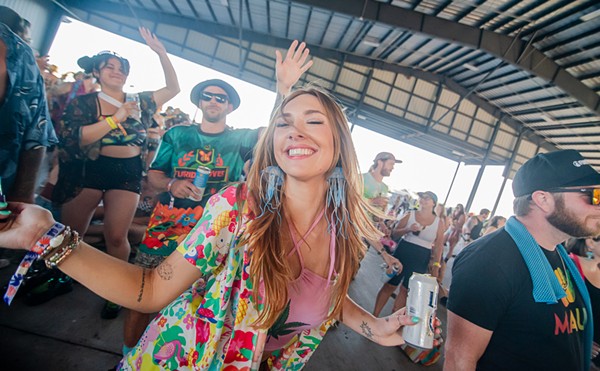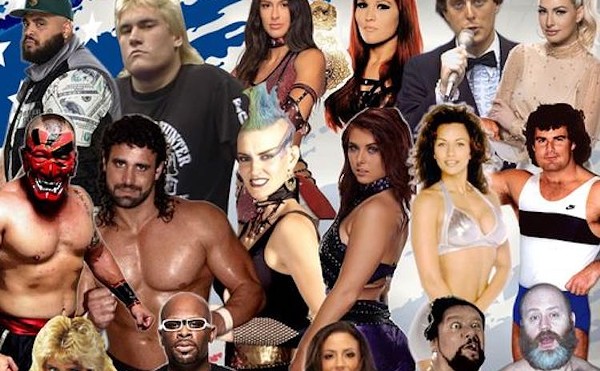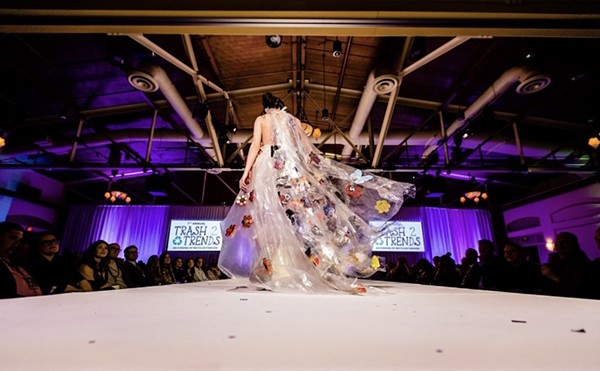It's impossible to write about sculptor William Edmondson without starting off with the fact that he was the first African-American artist to have a solo exhibit at the Museum of Modern Art. After this 1937 show, it was seven years before MOMA featured another black artist (painter Jacob Lawrence), and then it took the museum 31 years before giving another African-American artist, Romare Bearden, a one-man show.
The renowned photographers Louise Dahl-Wolfe and Edward Weston promoted Edmondson after he was "discovered" by a wealthy white Nashville socialite and artistic dabbler. Dahl-Wolfe even paid the shipping costs to get Edmondson's work to New York for the show.
In the late 1930s, Edmondson's sculptures fit into the vogue for "naïve" art, which longed for the "innocent" or "primitive." (Remember, Picasso had been mining African art.) Nonetheless, after the MOMA show, Edmondson drifted back into obscurity until his death in 1951. Then, around the 1980s, the swell in what's labeled variously as "folk," "outsider" or "self-taught" art carried Edmondson back into the spotlight. As with the obvious condescension that comes with the word "naive," the current folk-art world has its share of controversy. But if it weren't for these scenes, Edmondson's wonderful, charming figures might have been crushed and buried when his house was bulldozed in 1953.
Luckily, about 40 of his pieces, as well as Dahl-Wolfe's and Weston's photos, can be seen in the thoroughly engaging show "The Art of William Edmondson," organized by Nashville's Cheekwood Museum of Art and now on display at the Mennello Museum of American Folk Art. (The exhibit and has already made stops in New York City and Atlanta.) And instead of being cast as an unusual "outsider," with that word's undertones of quaint simplicity or freak-show marginalization, Edmondson is getting some careful consideration from scholars. "One of the things that's great about our catalog and our approach to the research," says the Cheekwood's Rusty Freeman, the exhibit's curator, "is that we tried to look at the context of his time and see what sort of influences would have been motivating him."
Born in 1874 outside of Nashville, Edmondson was the child of former slaves. He moved to the city and eventually became a hospital orderly. Previously he had worked various manual-labor jobs, including a position as a stonemason, which apparently was a revelation, both figuratively and literally. He told people that his sculpting began when he had had a vision from God showing him a tombstone to carve.
Using discarded stone from curbs and buildings, Edmondson kept carving tombstones, which he sold to his black neighbors. He also made figurative sculptures, most about two feet high: crucifixes, angels, lots of animals and several portraits of neighbors and public figures. "He's not just a one-dimensional artist," says Freeman. "He's definitely inspired by his religion, but he's also looking at the world around him. So he's aware of historical figures, like Eleanor Roosevelt and `prizefighter` Jack Johnson."
Edmondson's sculptures are a fascinating mix of abstract forms and realistic details. For example, "Bess and Joe," which Freeman notes is "considered one of his masterpieces," shows the couple seated side-by-side. As with all his sculptures of people, the facial expressions are minimalist: Joe's eyes, nose and mouth sit closely together at the front of a smooth, large egg of a face. But the details distill a wealth of personality. Joe's arm sits sweetly around Bess' shoulders. He wears a cap and a bowtie. Her legs peak out of a dress that's rendered roughly, perhaps to imply ruffles. It's a truly marvelous work.
Edmondson's animals include an alert squirrel sitting on its haunches, a fox ready to spring and a large eagle that looks like a metaphor for regalness. "He had a keen ability to look at nature and replicate that in stone," says Freeman. "Which is not to say that he carved these things perfectly naturalistically. But remember, he's not working from photographs, he's not making drawings, so he had to use his memory, and so some of the details that he captured, like the hock of a horse, the nuance of an ear or a bird wing -- he really paid attention in a visual sense to the world around him."
Many of the animals come from African and Southern folk tales, like Br'er Rabbit. Additionally, Edmondson arranged his work around his house in the African-American tradition of decorating yards to protect homes. "He was taking care to place his most important pieces under his shed," notes Freeman.
The photos provide not only a sense of Edmondson's yard but of the artist himself, who, with his heavy-lidded eyes and deeply creased face, looks utterly at home among his limestone companions.
During his life, Edmondson might have had only a brief glare of attention from the white art world, and his black neighbors might have considered him just an affordable tombstone maker. But today, he's more than just a quirk. As for labels, Freeman notes, "We try to use the term self-taught." Then he adds, "Certainly carving out of stone separated him from other self-taught artists, because it was a difficult medium."
With his perfectly compact "Bride" or his Bible-toting "Preacher," Edmondson easily charms and captivates viewers, making us momentarily forget the difficulty of finding forms inside lumps of discarded stone.
Curator Rusty Freeman will lecture on Community Heroes in the Sculpture of William Edmondson at 1:30 p.m. Saturday, June 16, at the Mennello Museum.















